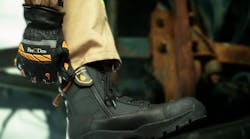Industrial Safety applications have used the concept of "The Critical Few", suggesting that there are a select number of types of incidents that are most impacting on your organization or the delivery of service your provide.
On a macro-scale, applying this concept nationwide in the United States we can identify six "critical few" areas of loss that are related to firefighter fatalities. These include:
- wellness and physical conditioning
- vehicles
- training
- wildland firefighting
- structural firefighting, and
- fire prevention and public education
The United States Fire Administration (USFA) has validated the first five areas cited as the five major areas of firefighter fatalities, with fire prevention and public education added as a measure of potential prevention for line of duty deaths.
If we were to take a deeper look into the data, e.g. NFPA U.S. Fire Data Profile through 2003, we would see that:
- There were 1,096,000 firefighters in the U.S. in 2003, 27% career and 73% volunteer, with 75% of the career firefighters protecting communities over 25,000 people
- There were 78,750 firefighters injured in the line of duty
- 38,045 of the injuries occurred on the fireground
- There were 15,900 collisions involving fire department vehicles resulting in 850 firefighter injuries
- The data further showed that firefighters have a higher risk for injury/death when fighting fires in vacant buildings.
Obviously it takes a certain volume of data to be able to see any trends. That doesn't mean you shouldn't look at your area or state for trends, even if your department had no injuries or accidents last year. Look locally, regionally, statewide or region within the country to start your data evaluation.
There is yet another set of information that provides a comprehensive understanding of what types of problems we face in the emergency services. The National Institute of Science and Technology report "Economic Consequences of Firefighter Injuries and Their Prevention. Final Report" summarized their findings very succinctly by stating: "There is much to be done in the future, if the impact of injuries is to be reduced. To cause a drop in fireground-related injuries preventing fires from occurring in the first place is, and always will be the best means. In particular, controlling criminal, incendiary fires is a goal worth pursuing, since fires that are intentionally set are often more fully developed when firefighters arrive on the scene. Incendiary fires can have multiple points of origin and be fueled by accelerants so they burn faster and hotter. These are very dangerous fires. Reducing injuries that occur during training can be accomplished by better supervision, strict adherence to training guidelines and regulation, and proper preparation. Firefighters who are healthy and fit can better handle the physical requirements of the job and return to work faster if they are injured. Basic and recruit training must emphasize safety over exaggerated heroics, and drill on proper techniques. More fire departments need to take physical fitness seriously and adopt a formal program that monitors progress against goals and goals met against number and severity of injuries. There should be no compromises on using protective equipment, including SCBA."
Using 2002 data, the study evaluated the nature of injury to firefighters, developing the following results:
Nature of Injury
- Sprain, strain, muscular pain-- Number of Injuries: 39,390-- Percent of Injuries: 48.8%
- Wound, cut, bleeding, bruise-- Number of Injuries: 16,220-- Percent of Injuries: 20.1%
- Other-- Number of Injuries: 9,650--Percent of Injuries: 11.9%
- Burns (fire or chemical)-- Number of Injuries: 3,855--Percent of Injuries: 4.8%
- Thermal Stress-- Number of Injuries: 3,225-- Percent of Injuries: 4.08%
- Smoke or Gas Inhalation-- Number of Injuries: 2,575-- Percent of Injuries: 3.2%
- Dislocation, fracture-- Number of Injuries: 2,340-- Percent of Injuries: 2.9
- Other respiratory distress-- Number of Injuries: 1,360-- Percent of Injuries: 1.7
- Burns and smoke inhalation-- Number of Injuries: 1,165-- Percent of Injuries: 1.4%
- Heart attack or stroke-- Number of Injuries: 1,020-- Percent of Injuries: 1.3%
As you can quickly see, muscle injuries accounted for approximately one-half of firefighter injuries in that year of analysis. In fact, over two-thirds of the injuries are the result of two injury groups. This speaks to the primary causes of injuries from a frequency perspective, yet if we look at the critical few deaths that occur; heart attacks, stroke and burns/smoke inhalation while experiencing less frequent events, have more traumatic and severe outcomes.
These three sources give you a tremendous amount of basic data to identify the "critical few areas" to begin working on. Apply this to your organization's or region's data and you know what the major areas of loss affecting the emergency service are. You can then begin to analyze what you can do locally to keep from becoming a contributor to the statistics.
Take that next step and do your analysis and make your list of action items.
Lesson #5
Once you know the critical few causes of loss that can cause you problems, it is easy to find interventions, remedies and controls that will prevent the situations from causing problems at your organization.
Safety 101 -A new series from the technical and administrative perspective, designed to help you reduce emergency responder injuries, illnesses, property loss and death!
Related:





